With tours on hold again due to the latest UK Covid lockdown (we hope to restart again as soon as lockdown ends), I thought I would write a blog post about my recent trip to the Isles of Scilly – something to read as the winter nights draw in! This was the 25th year I have stayed on Tresco, with only one or two missed years, and we spent 12 days on the island(s) this year after a couple of unplanned extensions, from 17th-29th October.
This year’s trip started badly. With lots of talk ahead of time about the possibility of a ‘circuit-breaker’ lockdown over half term, we brought forward our departure by two days. So we drove down on Friday night and were just having coffee early on Saturday morning, before the heliport opened, when news came through that a Rufous-tailed Scrub Robin (aka Rufous Bush Chat) had just been found back in Norfolk. Even worse, it was at Stiffkey, about 15 minutes from home and a site I visit regularly, including on Friday morning!
Things didn’t get any better as we checked in for our 8.30am helicopter flight to St Mary’s. This is the first year of the new helicopter service and we thought we would try it out. As we sat in the lounge, the helicopter was towed out onto the landing pad, started up and promptly shut down again. After the engineers had stared under the bonnet for a bit, it was towed back into the hangar. We were then informed that there was a technical fault with the helicopter – although we weren’t told that it had already been out of action for most of the previous two days! With only one helicopter leased to run the service, there is no alternative when it goes wrong – a bit of a disadvantage compared to some of the other travel options available like Skybus.
With it being a Saturday, if we didn’t travel today we wouldn’t get over until Monday, losing two days of our trip. We were offered no other option but to travel on the MV Scillonian (rather than putting us on a Skybus flight instead), which would still lose us the best part of a day. Despite the boat being much cheaper than the helicopter tickets, we were refused a refund of the difference and were told we couldn’t book ourselves on the boat and take a refund on the cancelled flight. Not great customer service and not a good first impression for the new helicopter service – an experience we would certainly bear in mind before booking on it again.
When we got down to the Scillonian, we had to wait on the quay because we didn’t have any tickets. When we finally got on board, we took our seats up on deck as it started to drizzle! Thankfully things improved from there, as the skies cleared from the west as we steamed out of the harbour at 10.25. The crossing was unusually calm – good for those with sensitive stomachs, but it did mean there were not so many birds today, aside from the regular Gannets, Kittiwakes and little flocks of auks, and two Arctic Skuas as we neared the islands.
It was mid afternoon before we finally got over to Tresco and were transferred to the cottage where we were staying. After a very late lunch, there was just time for a quick walk round the island. The first impression was rather quiet bird-wise. There had been a good arrival of American birds the week before, but they had gradually dwindled, moved on in the clear weather. With a run of easterlies since, most of the best birds arriving had been on the other side of the country. Still, there were a couple of lingering rarities remaining on St Agnes, so I resolved to head over there tomorrow.
After a quick walk round early morning, which yielded a couple of Yellow-browed Warblers and a small flock of six Common Crossbills flying over as the highlights, I met fellow Tresco regular Steve Broyd on the quay at New Grimsby for the 10.15 boat to St Agnes, and we were joined by John who was staying in the New Inn.
There was no news of either of our targets by the time we arrived on St Agnes and we made our way down to Horse Point fearing the worst. Thankfully just as we were scouring the area looking for the American Buff-bellied Pipit someone called us over to say they had just refound it. We watched it for some time, feeding on the short grass between the rocks and low stunted clumps of bracken and brambles. The bird was mostly on its own but sometimes loosely associating with Meadow Pipits.
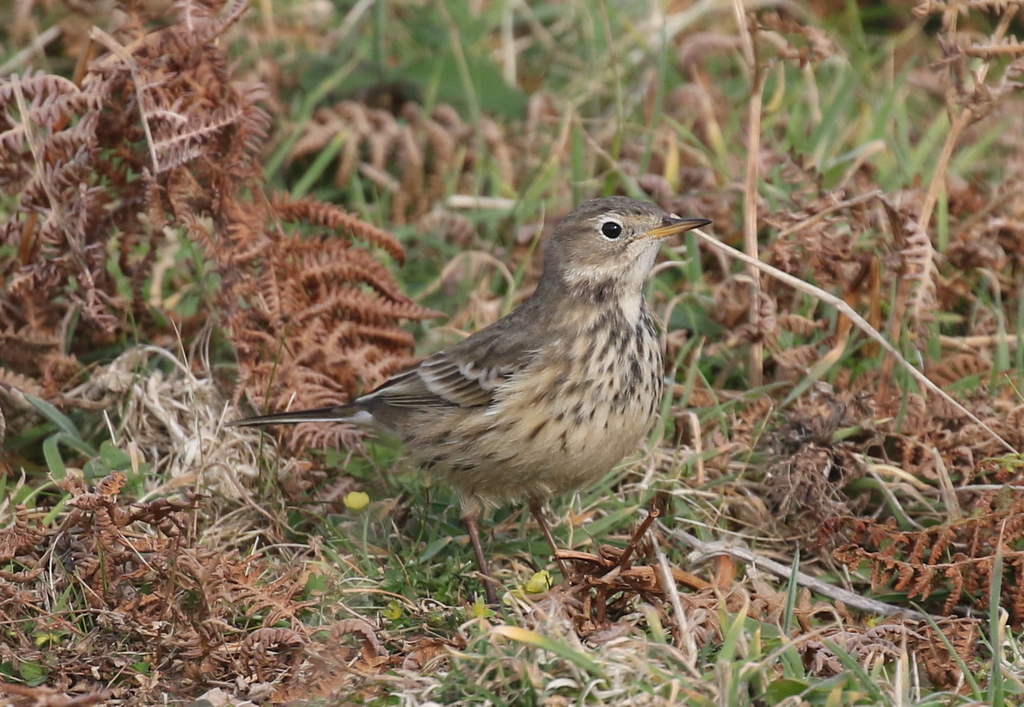
There have been 48 previous records of American Buff-bellied Pipit in Britain up to the end of 2019, so they are fairly regular here these days. This was the third I have seen on the Isles of Scilly, but the first since 2012, so always good to have a refresher, particularly as they can turn up anywhere, not just in the SW.
While we were watching the Buff-bellied Pipit, news came through that the ‘Eastern Stonechat‘ had been refound on Gugh, the neighbouring island attached to St Agnes by a bar. Thankfully the tide was low, allowing us to cross, so we made our way over there next. There were only a couple of other photographers present and the bird was now showing really well in the tall bracken, flicking round catching insects.
‘Eastern Stonechat‘ is the current term used for two aggregated species – Siberian Stonechat (Saxicola maurus) and Stejneger’s Stonechat (S. stejnegeri). Only recently treated as separate species, the authorities currently require a DNA test to determine which is which (and we had neglected to bring a DNA testing lab with us!). But it may transpire that they are fairly easily separable in the field, and some individuals certainly appear to be distinctive enough. This one looked like a slam dunk Siberian Stonechat (maurus) to my eyes, pale and frosty, with a pale peachy-coloured rump.
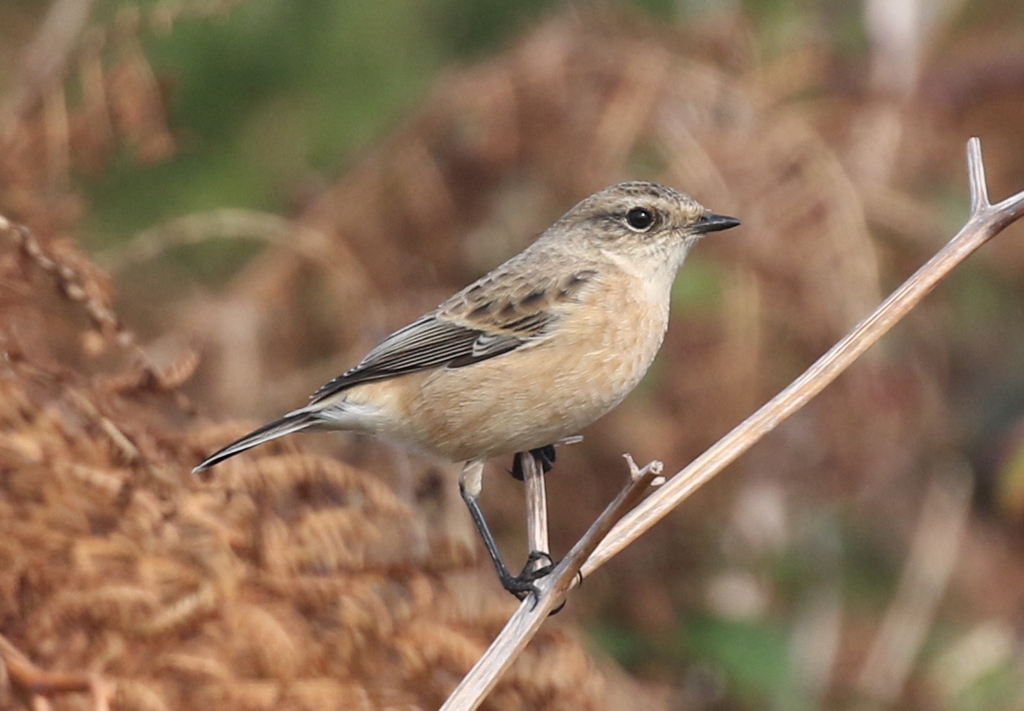
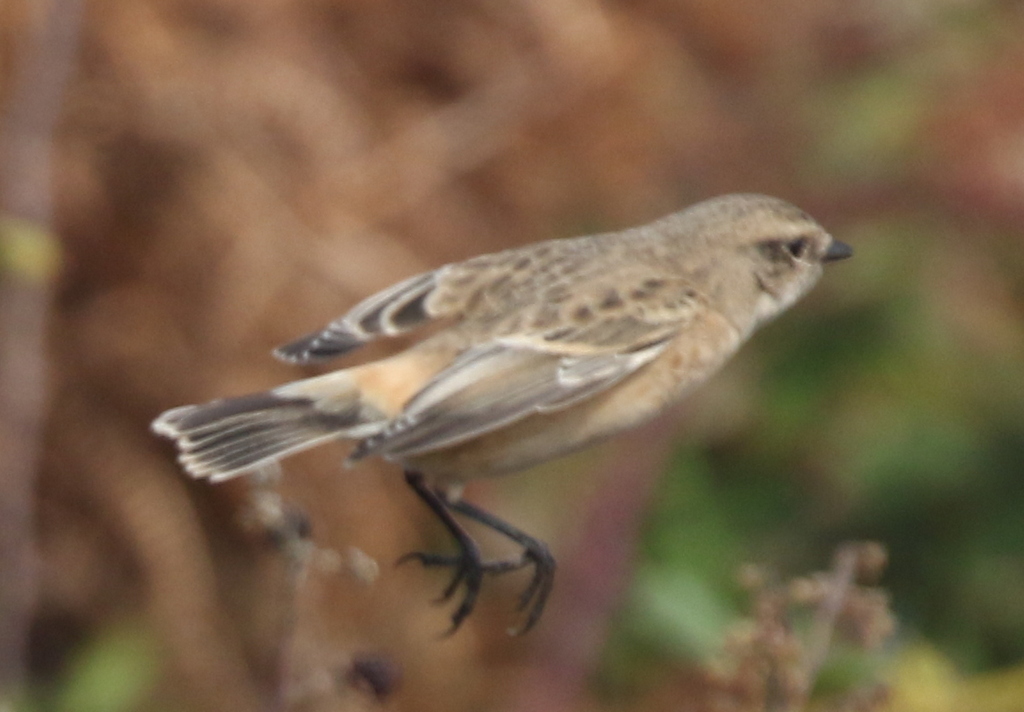
It was a lovely sunny day now and there seemed to be birds on the move. There were several Chiffchaffs flycatching in the nearby pittosporum and others appeared to be making their way through the bracken and brambles. There had been a report of a Red-breasted Flycatcher on Gugh earlier, so we decided to explore. We didn’t find the flycatcher – it turned out the directions given were not especially accurate and we had looked in the wrong place – but we spent an enjoyable couple of hours wandering round Gugh.
We still had over an hour before our boat back was supposed to leave, so we decided to cross back to St Agnes and circle round via The Parsonage. As we walked along the road towards the front wall, we could hear a distinctive call, a repeated ‘tsk, tsk’ rather like someone tutting, coming from the front garden. It was a Dusky Warbler! It had gone quiet when we got to the wall and looked over, and someone walked round the house and went in through the front door.
We stopped to scan the garden – a Pied Flycatcher and a Spotted Flycatcher were flitting around in the trees above. Further along, from the top of the driveway, there were several thrushes under the apple trees and one or Blackcaps. As I was looking through them, something small shot across through the foreground of my bins. Steve saw where it landed, in the far corner of the garden, and announced it was a Pallas’s Warbler! As I got onto it, I noticed some movement in the pittosporum just behind and the Dusky Warbler popped out briefly.
We watched the Pallas’s Warbler as it fed in the ivy in the sunshine, hovering and flashing its lemon-yellow rump, before it disappeared up into the trees behind the annexe. There was a Yellow-browed Warbler in there too. Then the Dusky Warbler started calling again, from the hedge behind the apple trees and we had fleeting views as it flicked in and out several times, before making its way round behind the house.
Several people had gathered here now, and the Dusky Warbler had disappeared back into the tangles in the front garden, where we could still hear it calling on and off. It was time for us to make our way back to the quay to catch our boat back to Tresco. What an amazingly productive hour it had been at The Parsonage!
There had been several Little Buntings on Tresco over the last week, and one was refound while we were on St Agnes, behind New Grimsby along the track up to Castle Down. By the time we got back, it had disappeared – there were lots of people out walking, up and down the track. But the following morning I found it again, before it got too busy. It was initially in the gardens in front of the Coastguards Cottages, but eventually moved back to the track where it proved to be very obliging.
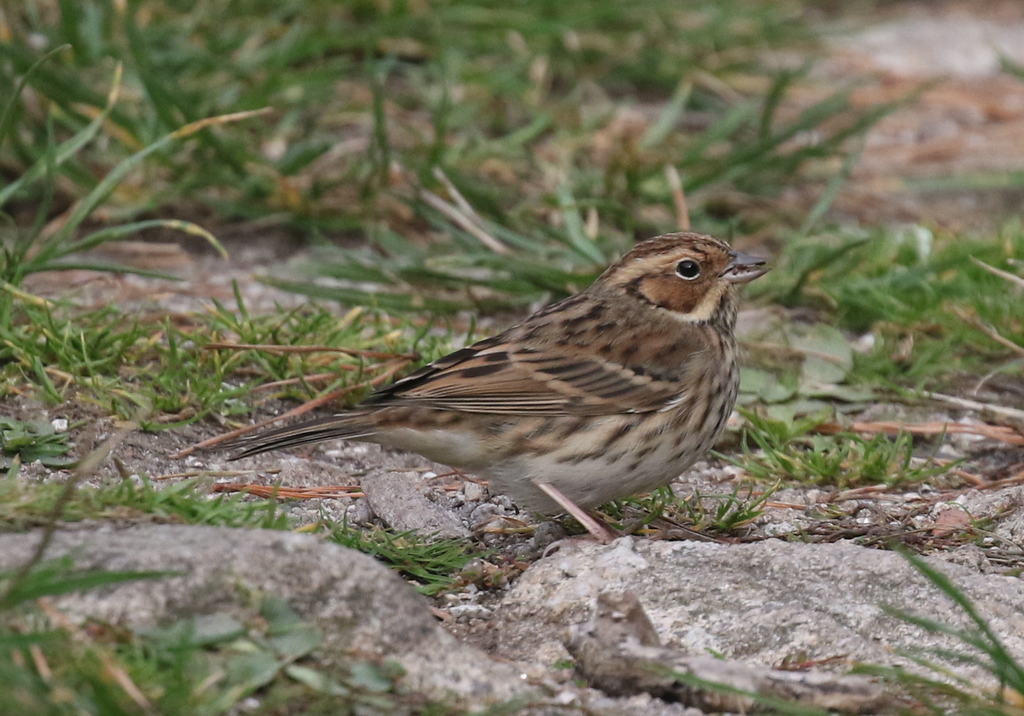
Things then settled down over the next few days and there seemed to be little in the way of new arrivals. The excitement of yesterday’s Dusky and Pallas’s Warblers did not continue. With a strong southerly airflow from the Mediterranean building, I had high hopes for some overshoots but a lone Glossy Ibis on 21st was the only notable new bird. After touring St Agnes, Gugh and St Mary’s it made the briefest of visits to Tresco mid afternoon. Thankfully it flew in past me and landed on the grassy heliport, just in time for Steve to see it as he waited for his flight off. It only stayed three minutes before flying off towards Carn Near, and was back on St Mary’s soon after.
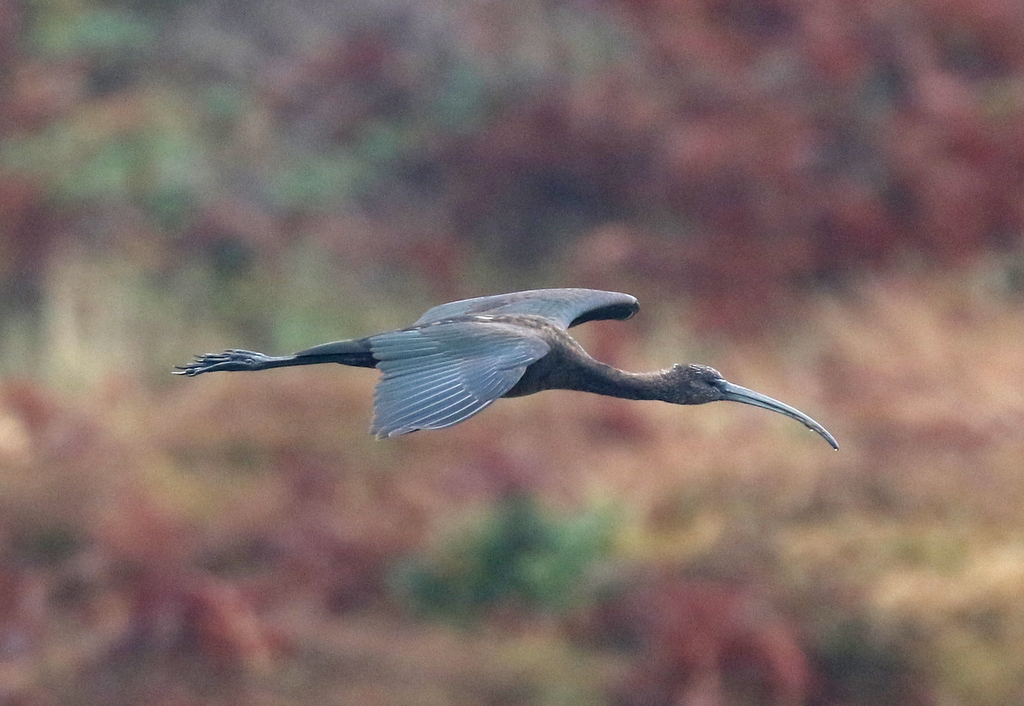
The southerly airflow also brought with it a small arrival of Black Redstarts. I usually see them here at this time of year, in variable numbers depending on the prevailing weather conditions. Most of them are grey female/first winters, but a smart male Black Redstart took up residence in the churchyard at Old Grimsby for a couple of days.
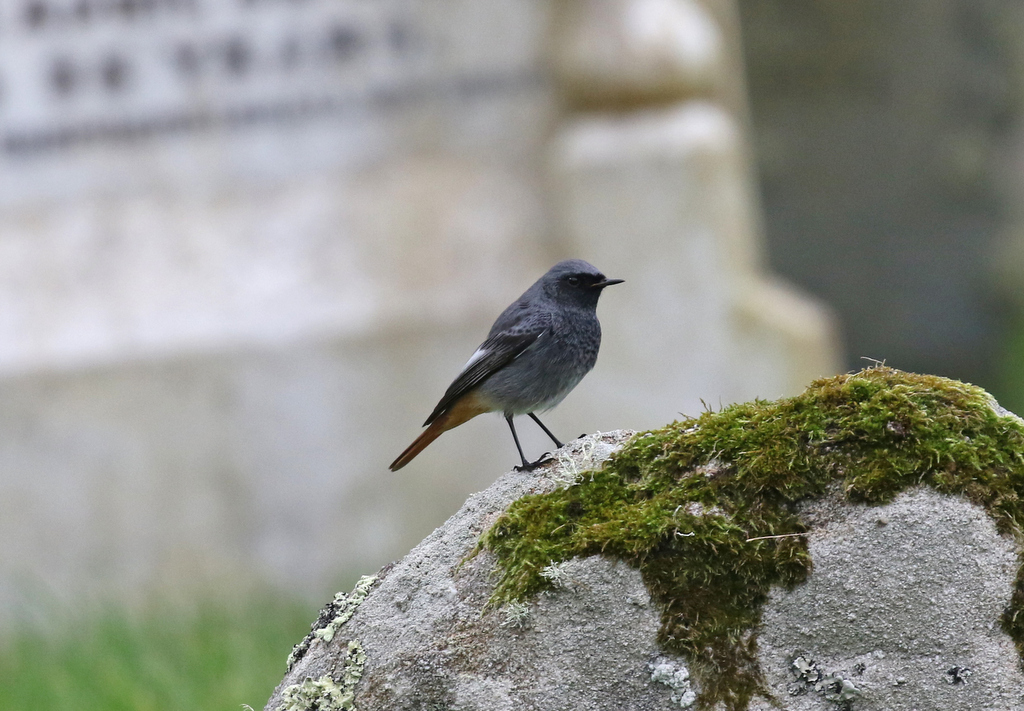
I had taken with me a small portable Skinner 20W actinic moth trap but the southerly airflow failed to produce much in the way of migrant moths on Tresco, despite high hopes. Two Palpita vitrealis (Olive-tree Pearl) were all I had to show for my efforts, despite there being a couple of Crimson Speckled on other islands. This year proved to be rather quiet for moths.
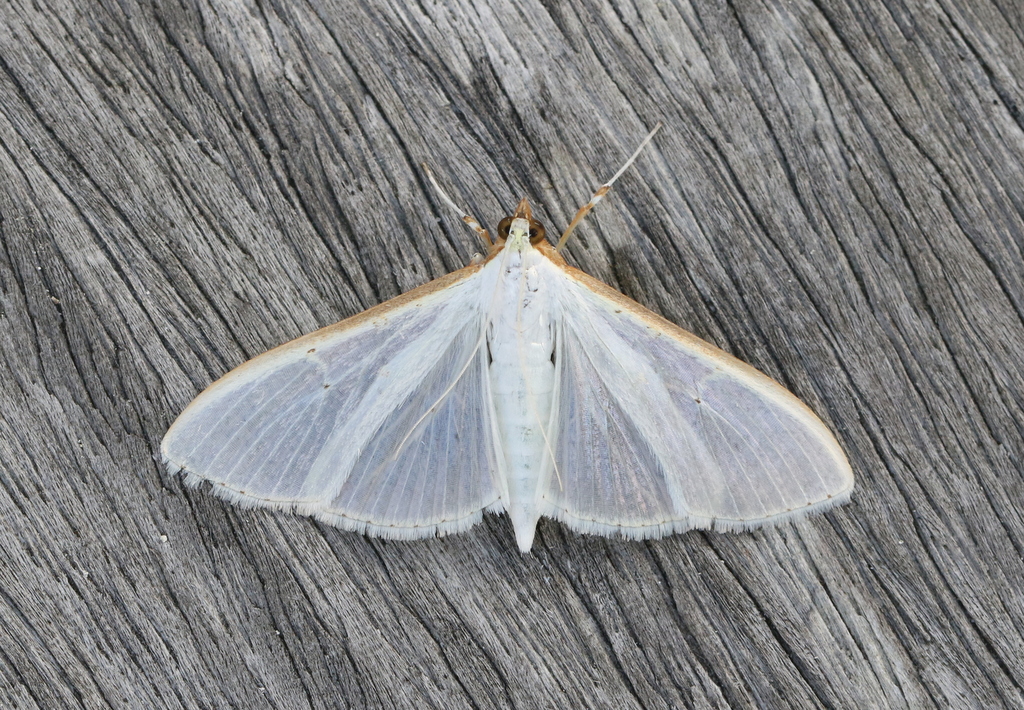
The next couple of days felt a little like Groundhog Day. There were 5 or 6 lingering Yellow-browed Warblers on Tresco and the variety was provided by which I could find where on different days. A couple of Ring Ouzels were in the fields between New and Old Grimsby at the start of our stay but seemed to move on after a few days in the calm, clear weather.
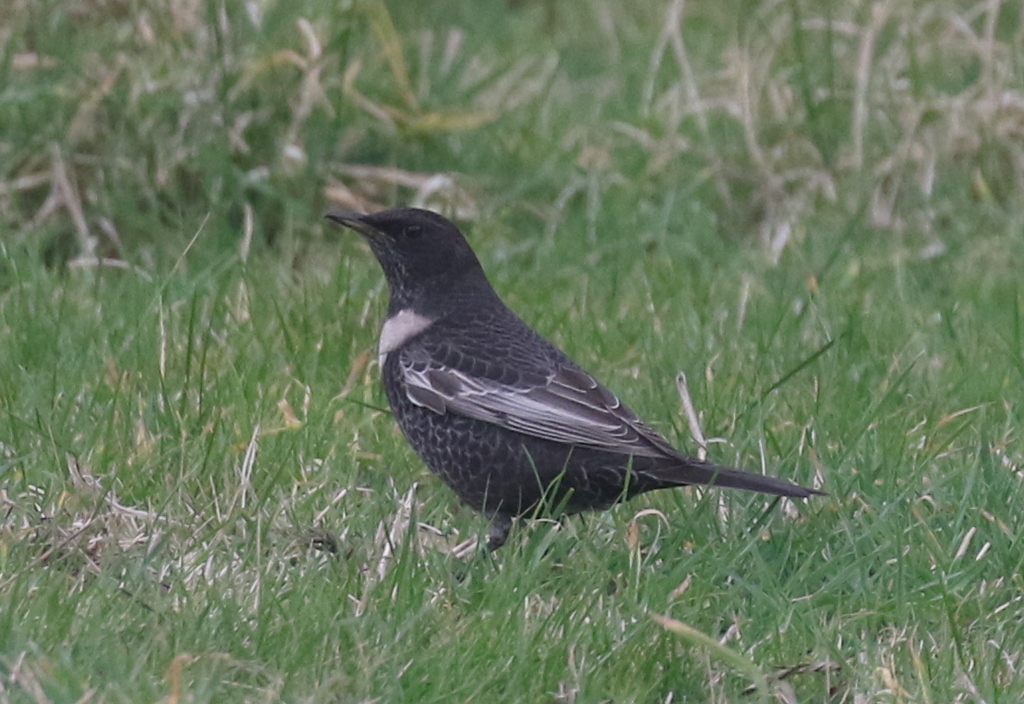
There were small numbers of Fieldfares and Redwings on the island throughout and the lull in new arrivals did at least give me a chance to spend some time studying some of the Redwings more closely. Many of them were noticeably darker than the Scandinavian birds we typically get back in Norfolk, more heavily streaked and blotched below and with more noticeable dark markings in the undertail coverts. They looked like Icelandic Redwings, of the race coburni, though there was clearly a lot of variation which only added to the interest.
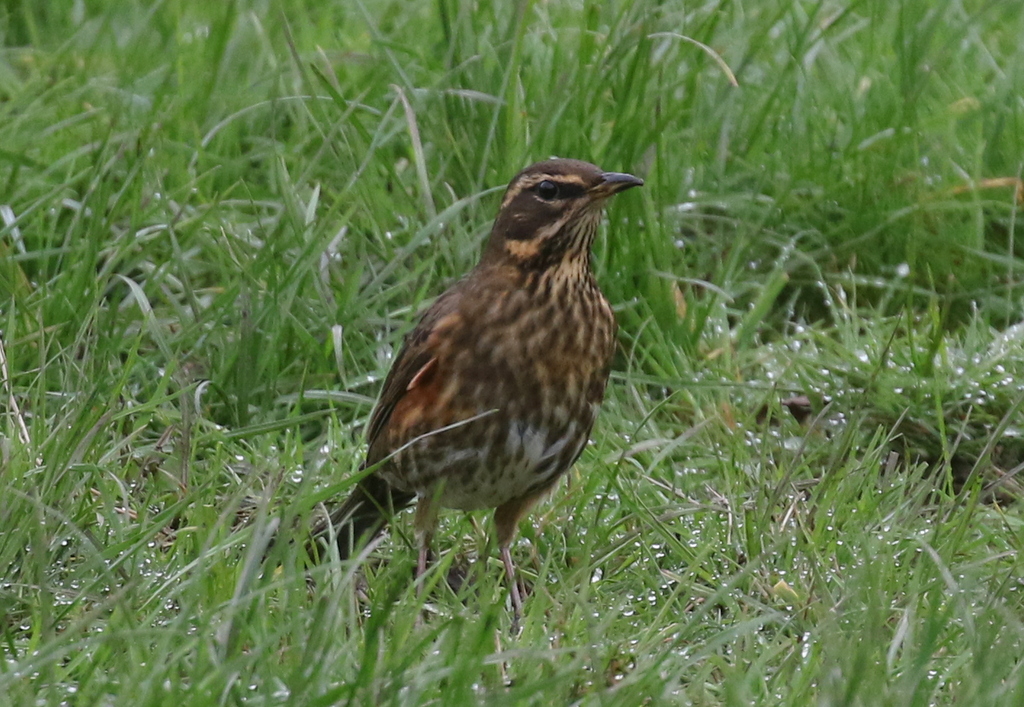
I have blogged before about the changes I have seen on Tresco over the years. This year, my wanderings around the island were continually disturbed by the grinding noise of the tractor flailing the pittosporum hedges. In places they are now getting very thin, as the flailing goes ever deeper each year (it must be no fun for the tractor driver just to trim one year’s growth – it makes a much better noise if you can really dig it in to the thicker branches!) and the cattle are pushing through and making big gaps. Perhaps this is deliberate – I am sure if the hedges were to die then the larger fields would make it easier for managing the cattle.
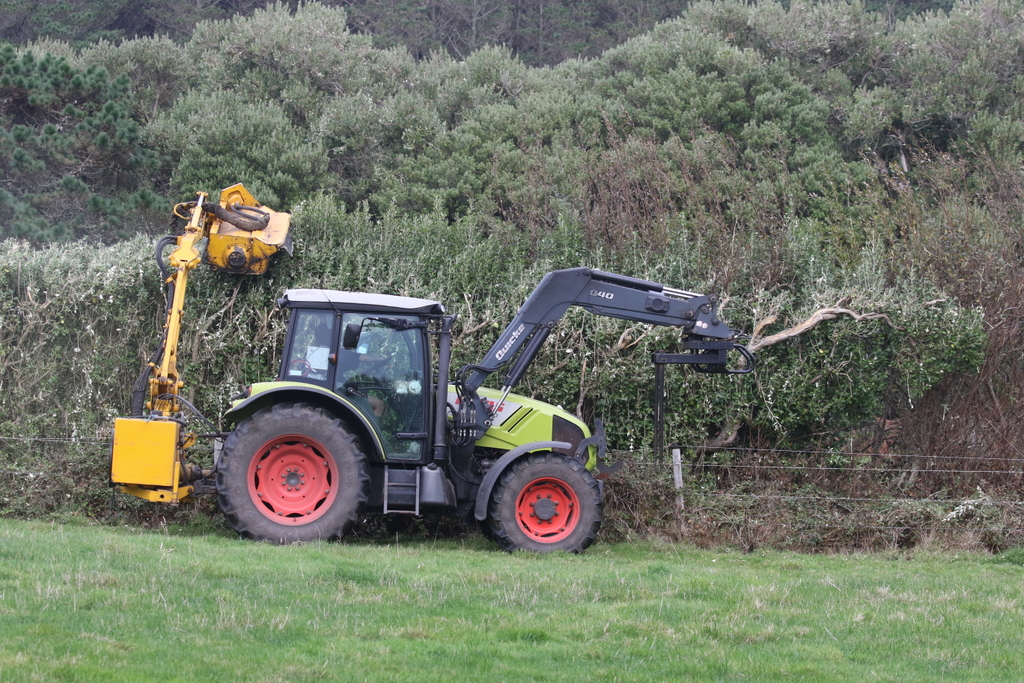
I remembered fondly my first visit to Tresco back in the 1980s. The fields along Pool Road were still used for growing bulbs and vegetables back then and by October were full of weeds. The fields were smaller and the hedges overgrown, full of brambles. There were lots of birds. Now, with a combination of improved grass and overcut hedges, they are much less attractive to wildlife.
For many years, the fields at Borough Farm were still managed the old way, but since they have been taken back under the control of the Tresco Estate for the last couple of years they are now grassed over and the hedges have been cut back here too. I have fond memories of all the birds I have seen here over the years as well but they are sadly increasingly a shadow of their former selves too. Shame. It really brought it home spending time on St Agnes this year, which is still more like the Scilly Isles of old (as are most of the other islands), with weedy fields and overgrown hedges, full of birds.
There are still some good, birdy places on Tresco though. The areas around the Great Pool and Abbey Pool are some of the most promising still, but despite my best efforts, I hadn’t yet managed to find anything unusual here this year. A Firecrest and a late Reed Warbler in the sallows, along with 2-3 of the Yellow-browed Warblers. Shelduck, Shoveler, Pintail and Tufted Duck put in appearances. The three Black Swans which have taken up residence here this year provided a welcome distraction.
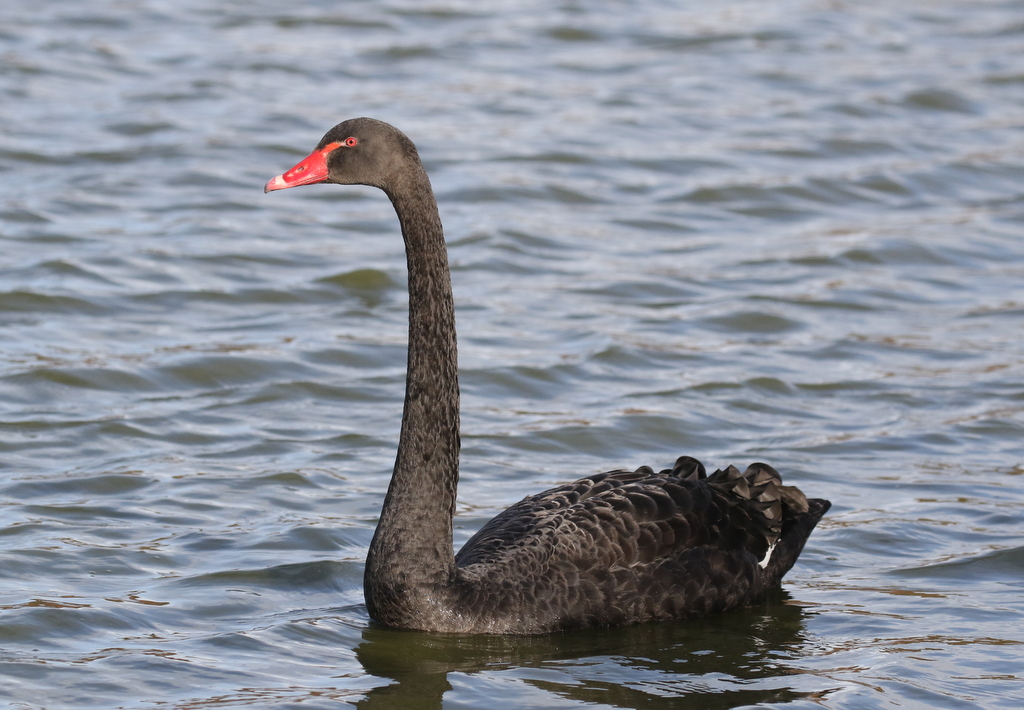
The wind swung round to the west on 23rd and the weather became more unsettled. It was wet and windy on 24th with the arrival of a weather system straight across the Atlantic bringing a passing weather front. Late in the day a Rose-breasted Grosbeak was found on Gugh. The change in the weather had done the trick and brought with it some new birds from North America!
There was no way to get to Gugh that day, but I resolved to head over to St Agnes on the scheduled boat tomorrow morning. Louis Cross, another Tresco regular and friend of mine, had recently arrived and I told him of my plans that evening. We bumped into each other first thing the following morning and spent an hour or so birding around the Great Pool. An early boat had gone across from St Mary’s to St Agnes and now negative news came back – there was no sign of the Grosbeak. I changed my mind – I figured there would be lots of birders on St Agnes and I had a better chance of finding something good on Tresco, brought in on the same weather system. Louis had arranged to go to St Agnes with his family, so decided he would go anyway.
Needless to day, I failed to find anything on Tresco that morning – a Reed Bunting by Abbey Pool was the only new bird. I was already kicking myself for not going to St Agnes when news came through mid morning of a Red-eyed Vireo there. Then, after heading back to the cottage for lunch, I had a call from Louis on St Agnes. Words to the effect of ‘I’m looking at a bird and I’m not sure what it is’ but with a bit more ‘colour’, I immediately knew it had to be something good!
Louis sent me a photo, taken with his phone off the back of his camera, but it came through upside down and there was a reflection across the screen so it was hard to make out. He had already mentioned the possibility of it being a North American bunting – and when he sent me another, better photo it looked good for Indigo Bunting. I quickly downloaded a photo of the Ramsey Island bird from 1996 and sent it to him, while reassuring him that a 1st winter female Indigo needn’t have any blue in the tail, which seemed to be his main reservation. Then someone he had called over to the see the bird posted a photo on the Scilly WhatsApp group and the news went out.
Cue scramble to get to St Agnes! I could see people over on the quay at New Grimsby waiting for one of the St Mary’s boats, so while I cycled over to see if I could get over via St Mary’s, my wife tried to contact Tresco Boat Services. Despite it being a Sunday, she got through and managed to arrange a jet boat special to St Agnes. The game was on! On my way back to the quay, I scooped up a fellow Norfolk birder who was over on Tresco from St Mary’s and we had a nervous wait as the jet boat failed to appear. ‘Straight away’, turned into ‘3pm’ and eventually at 3.15pm finally the boat appeared.
We were whisked across to St Agnes (despite a big swell once we got out of the lee of Samson) and Louis met us on the quay to lead us to the bird. Several birders over from St Mary’s were leaving but there was still a small group watching the Indigo Bunting which was feeding on the path by the old bonfire with a couple of Chaffinches.

Indigo Buntings breed in eastern North America and winter from southern Florida down to northern South America. They are extremely rare visitors here with only two previously accepted records – apart from the 1996 Ramsey Island bird, one was photographed on a bird table on Anglesey in May 2013 but only identified retrospectively. The adult males are bright indigo blue in summer, but first winters, particularly young females, can lack any blue at all.
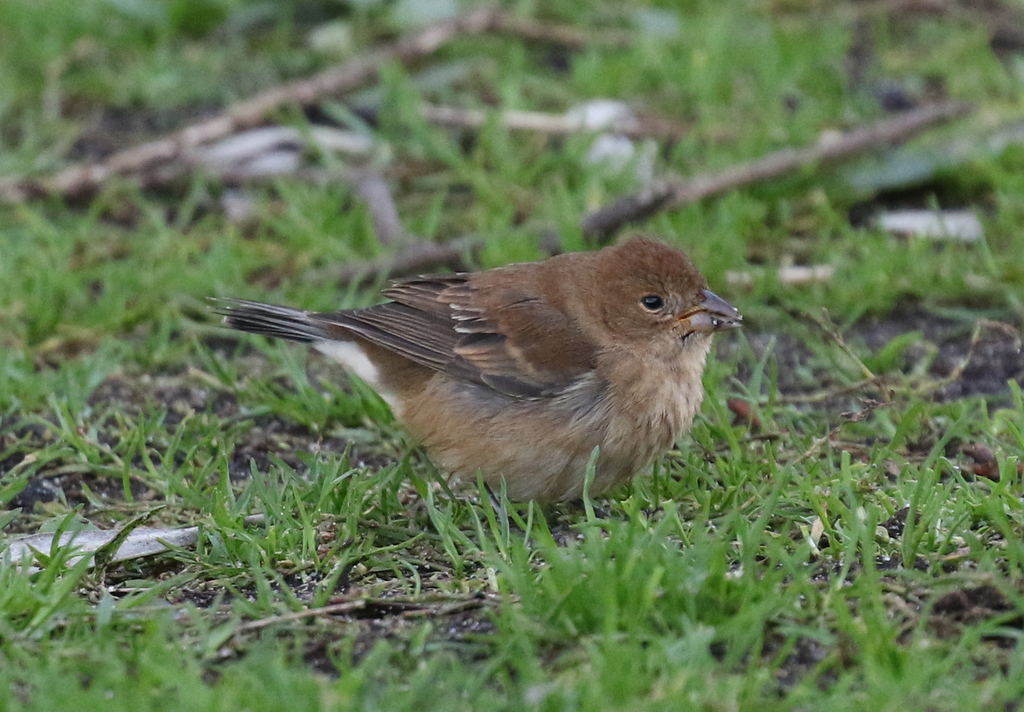
A fantastic find by Louis – many congratulations to him – and it was nice to be able to share the moment with him, watching it together. We even had time to nip round and see the Red-eyed Vireo nearby, another vagrant from North America, before our jet boat returned to take us back to Tresco. Not surprisingly, we had a couple of celebratory pints in the New Inn afterwards (before we both had to go back to family duties)!
We were supposed to be leaving the next day, but it felt like there had to be more to find on the islands. With all the excitement on the Scillies, my elder son, Luke, announced that he was coming down from Spurn for a few days with a couple of his friends, Jacob & Bethan. We decided to stay on too, although it required some hasty rearrangement of travel plans and we would have to move cottage in the morning.
I got up early to pack up, and figured I had enough time for a quick couple of hours birding before we had to move cottage at 9.30am. I thought the pools offered the best chance to find something in the time available, so rather than setting off on foot I cycled down to Swarovski Hide. There was no sign of anything on the Great Pool and the bushes along Pool Road were pretty quiet as I cycled down to the far end. I left the bike propped up against the bushes and had a walk round the bushes.
As I started to walk over towards Abbey Pool, I noticed I had a message from Dick Filby on St Mary’s. He had photographed a rainbow which appeared to end on the south end of Tresco and had joked ‘And today’s #ScillyBirds rarity is awarded to….Abbey Pool, Tresco!’. Little did he know how right he was! I had a quick look over the bracken on the east side of Abbey Pool, but couldn’t see anything of note, so cut across round the woodpile and out to Pentle Beach.
When I got back to the SE corner of Abbey Pool, I walked through the bracken to check along the near edge of the water. I could see a wader on the shore now, right up in the NE corner. It seemed to have yellow legs, but I just had my bins and camera with me and it was too far to be sure. I had a pretty good idea what it was, but I spent the next 10 minutes or so working my way carefully up along the shore, using the vegetation as cover so as not to disturb it. I needn’t have worried. As I got up towards it, the juvenile Lesser Yellowlegs turned and walked back along the shore towards me, before walking past about three feet from me! It was too close to focus on!
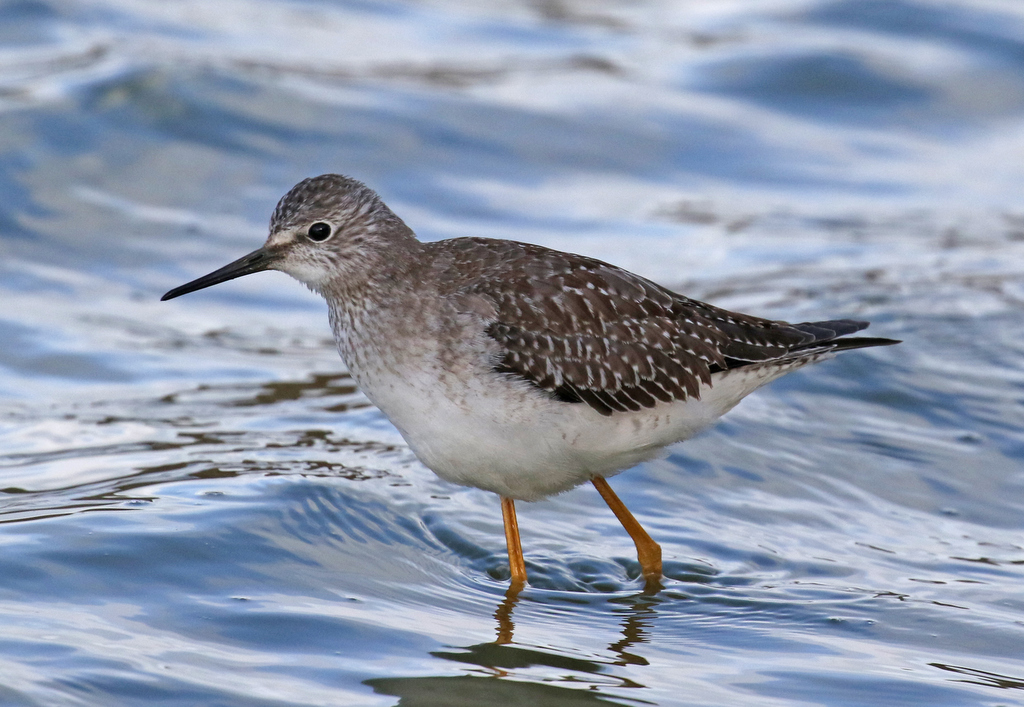
So the rainbow and Dick were both right – the Scilly rarity of the day was indeed on Abbey Pool! I messaged him back with a photo. Louis came over to see it and then I headed back rather later than planned. Lesser Yellowlegs is another visitor from North America, not as rare as the others but a nice find nonetheless.
It really felt like there should be more North American vagrants to find on the Scillies, given the birds which had appeared over the last couple of days, but we couldn’t find anything else on Tresco that day and the other islands came up blank too. The Indigo Bunting had flown off before Luke and friends arrived that day, so we went back to St Agnes the following day in the hope it might reappear. It didn’t, but we did finally manage some great views of the Red-eyed Vireo just before we had to leave.
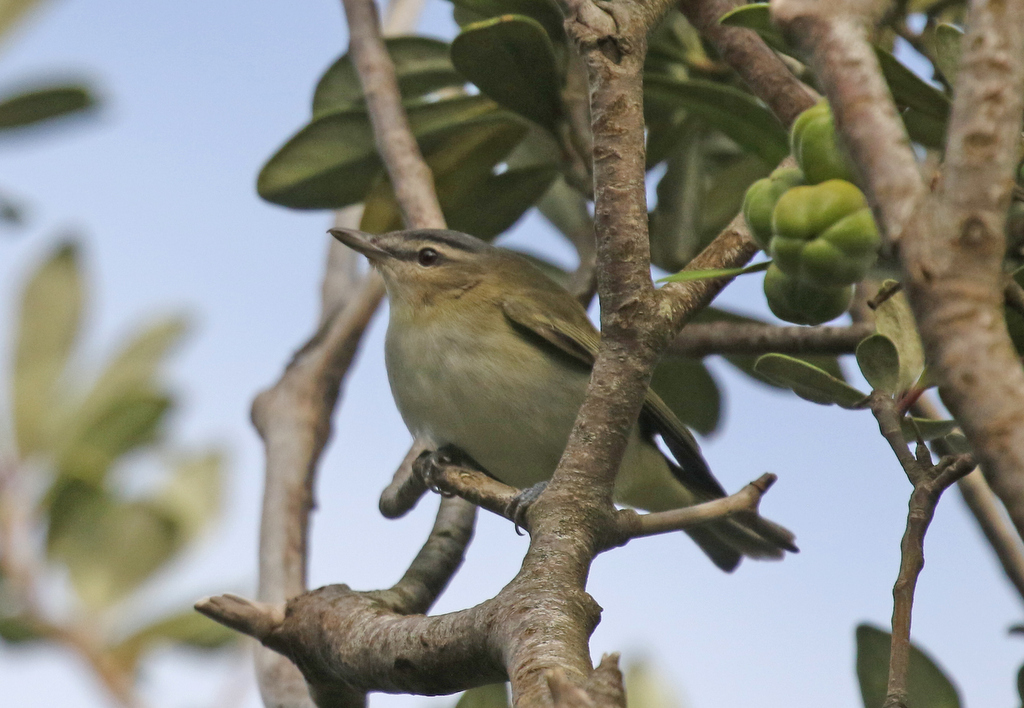
The sun had come out by the time we got back to Tresco and we figured the light would be great at Abbey Pool. With the last of the birders over from St Mary’s departing as we arrived, we had the Lesser Yellowlegs to ourselves now. The gusty wind had whipped up foam which had piled up along the shore, and it was great to watch the Yellowlegs feeding, picking at the foam, as it made its way up and down the edge of the water, at times just a couple of metres away from us.
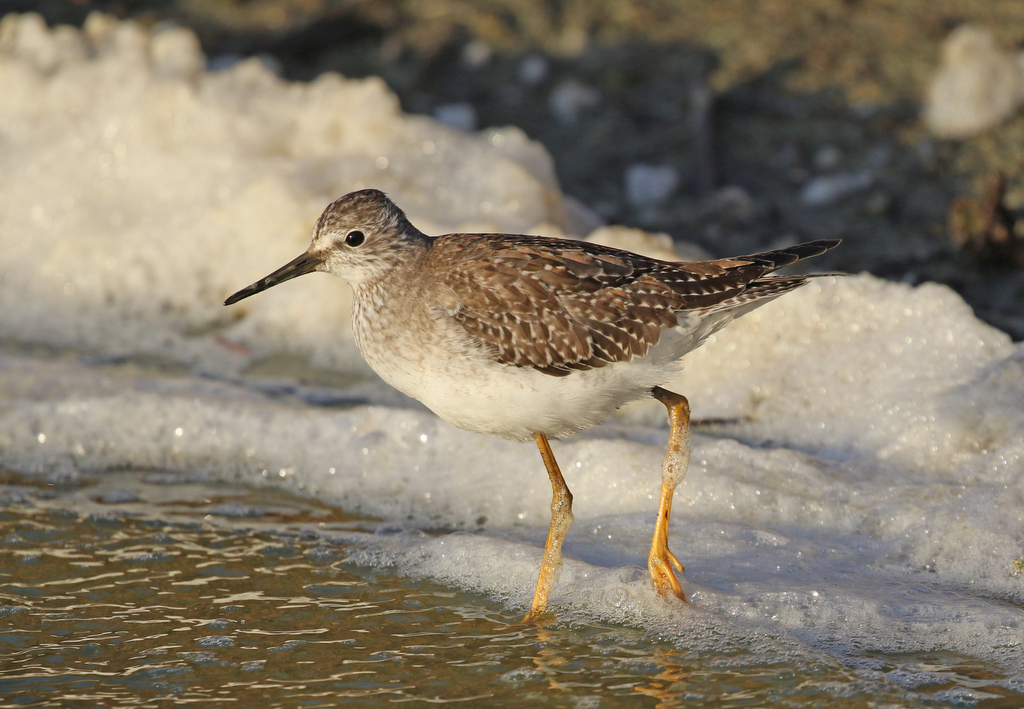
It was very windy the next day, as ex-hurricane Epsilon came in across the Atlantic, bringing with it some huge swells. The combination of the wind and swell produced some impressive waves which were amazing to watch from the top of Castle Down as they battered the north end of Tresco, Bryher and crashed over the lighthouse on the top of Round Island.
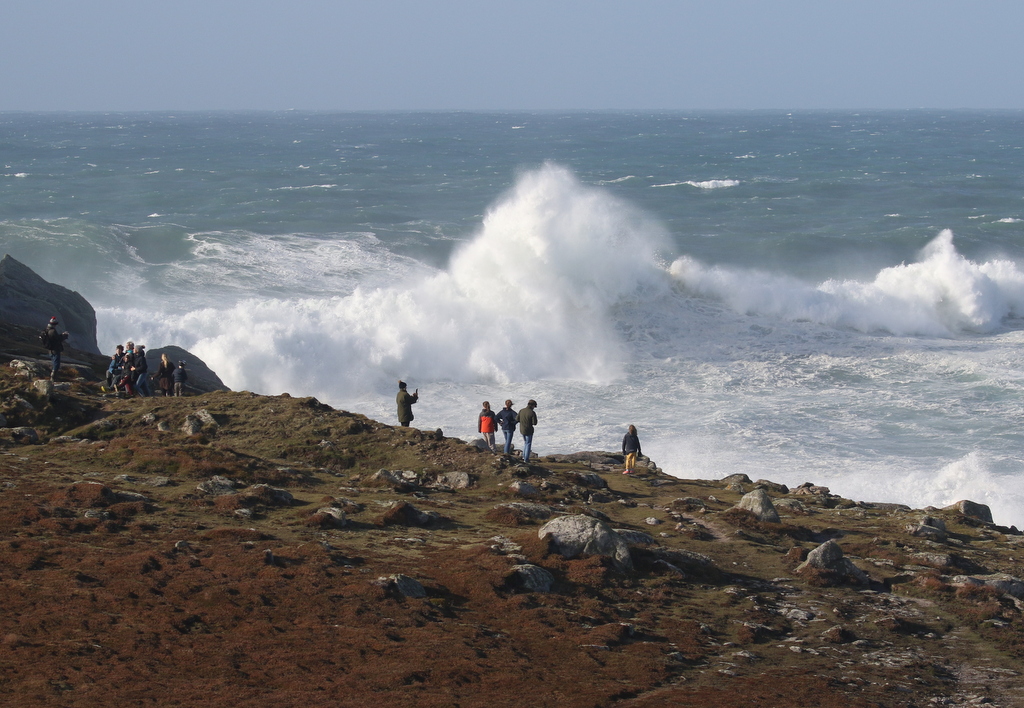
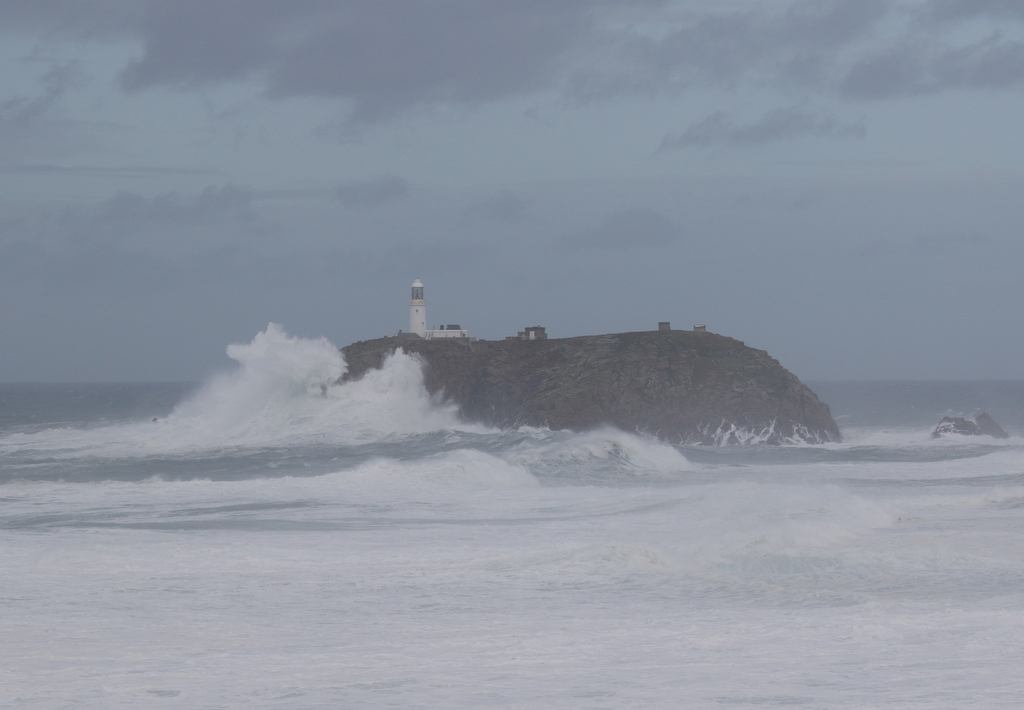
On my way back from watching the waves in the morning, I called in at Gimble Porth to catch up with the bunting double – a Lapland Bunting and another Little Bunting were both feeding with the finches in the fields there and eventually showed very well. With no inter-island boats due to the weather, we had them to ourselves today.
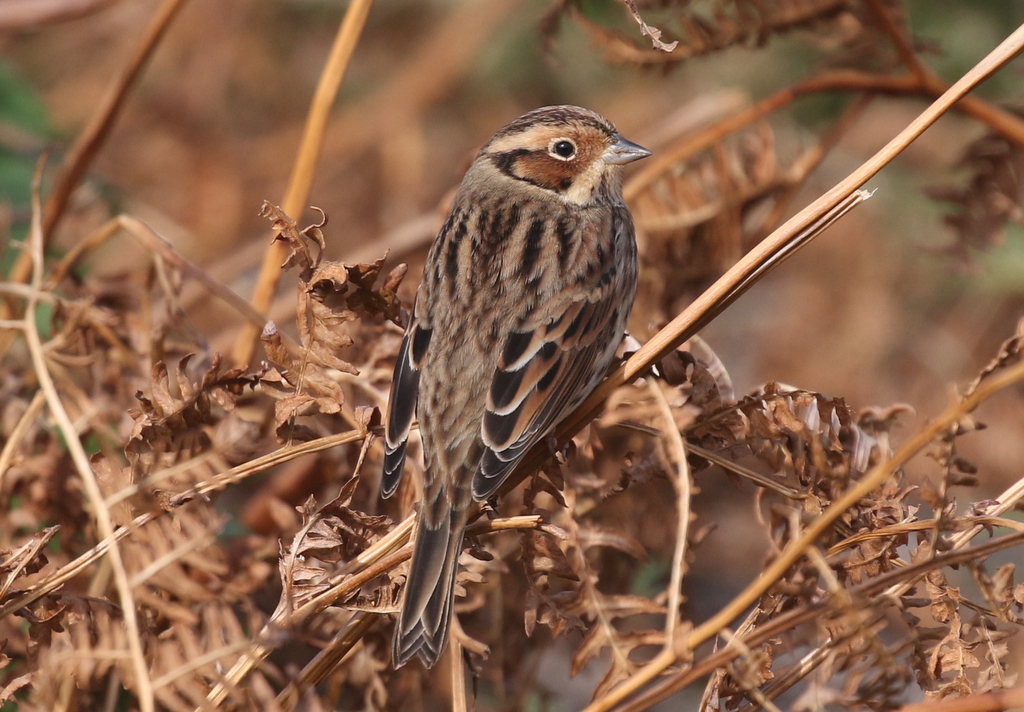
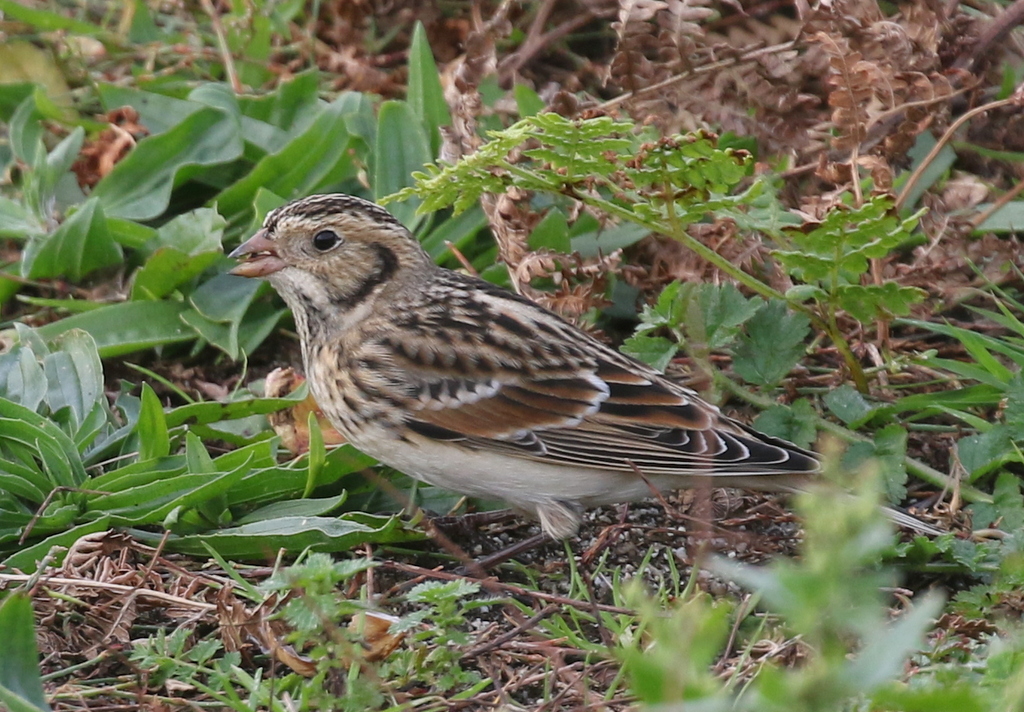
Epsilon did bring with it some more North American vagrants across the Atlantic, but unfortunately not to the Isles of Scilly. We were almost out of time again anyway and had to content ourselves with a couple of late additions to the Scillies 2020 list – a smart male Golden Pheasant along Abbey Drive last thing that afternoon and the Hooded Crow which had been around all week but finally put in an appearance as we were getting ready to leave the following morning.
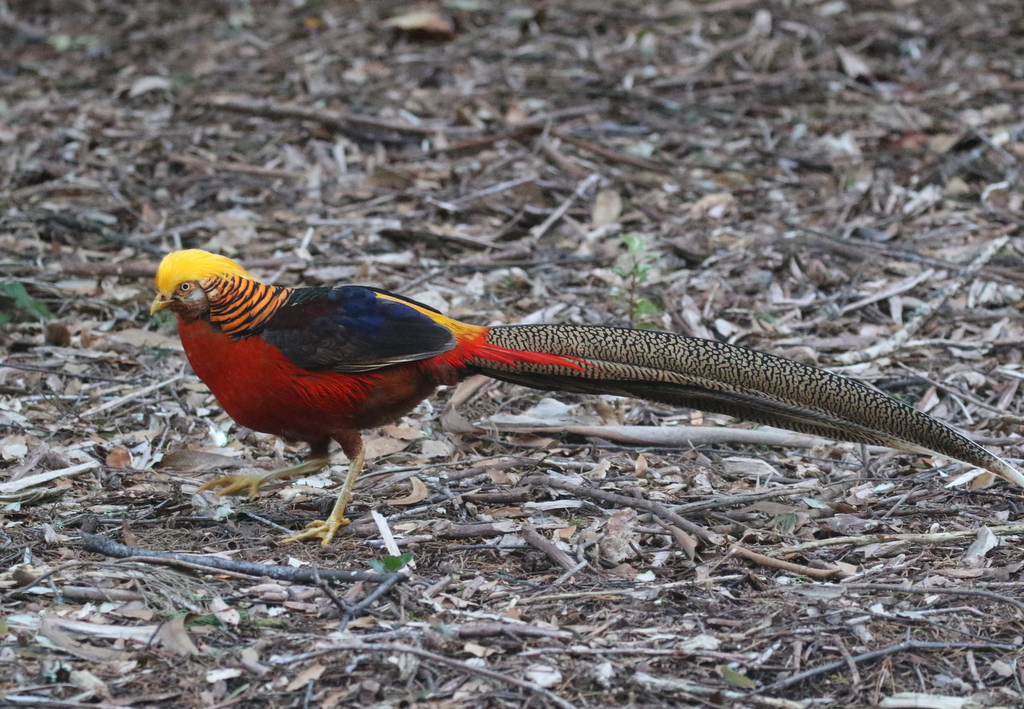
Unfortunately our departure from Tresco was to be no less eventful than our arrival! Not the fault of the helicopter service this time, but Tresco Estate. We had waved Luke, Jacob & Bethan off on the Firethorn in the morning, as they were flying from St Mary’s, and after lunch in the New Inn we walked over to the heliport. We had left our luggage outside the cottage for delivery to the heliport, but when we arrived there was no sign of it. We were repeatedly assured it was on its way, but the longer we waited the more worried we became. Eventually just two of the six bags there should have been arrived!
We were spun a right old web of stories and excuses before eventually it all unravelled. The Estate office had clearly made a mistake and somehow thought all our luggage was Luke and his friends’ (despite them having taken their own bags), so unbeknownst to any of us they had put our bags on Firethorn and we had unknowingly waved them off with Luke earlier! Despite there being no one on St Mary’s to claim them, they had just left all our bags there on the quay. Once they realised the mistake, presumably when we arrived at the heliport, rather than confess and ask us how many bags there were, they had tried to cover it up while they sent a jet boat over to St Mary’s to try to find them. The person sent over had found two bags and assumed – wrongly – that was all of them.
Our helicopter was now due to depart, so I had to send the rest of the family on ahead while I tried to track down the rest of our bags. Another jet boat was dispatched and the rest of lost baggage was eventually found and returned. Luke had run over to the quay on St Mary’s and was able to confirm the correct bags were on their way. I would like to say that the Estate Office staff apologised for all the upset and delay it caused us but instead they pointed out how much it had inconvenienced them having to send two jet boats to collect the luggage they had lost! The best I can say is that in 25 years of staying on Tresco, this is the first time we have had problems like this, so hopefully it was a one-off and will never happen again. And I eventually managed to catch the next helicopter across to Penzance, together with the four bags, and we were only an hour late setting off on the long drive back to Norfolk.
So leaving aside the unusually chaotic travel experience this year, looking back on the trip now and scanning through the great list of birds seen it was well worth the effort again! Perhaps one to think about as a possibility for a future tour, once Covid is behind us?
















